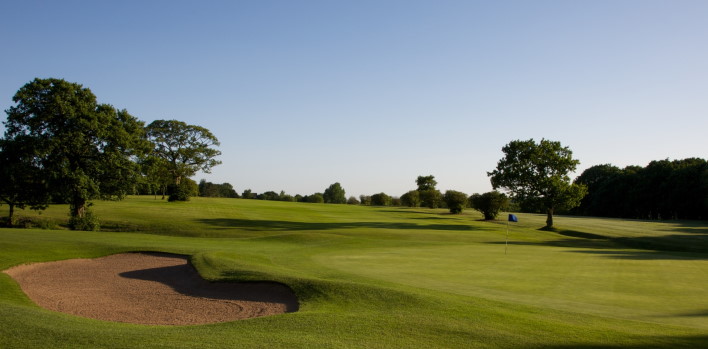Bingley St. Ives

The Club was initially formed as a 9-hole layout in 1931 but was expanded to 18 holes three years later. It started life as a municipal course then in 1990 was privatised with the members forming a Limited Company and agreeing a long term lease with Bradford Council for the use of the land.
The exact origin of who created the 18 holes that are in play nowadays is not certain. The Club claim Alister MacKenzie, who passed away in early 1934, was heavily involved in the early development meanwhile other research states that it was most likely his brother, Charles, who did both the design and construction or it was at least some form of collaboration between the two.
Regardless, the greens and their complexes are wonderfully crafted and the bunkering is exceptionally strategic; there’s nearly always a preferred side to be playing from on your approach.
The routing at Bingley is quite unusual too in that it is formed by a single loop leaving the clubhouse and moving through parkland, woodland and moorland before retracing those steps and returning to where you started.
Sprawling across the St. Ives Estate the park holes, on the lower part of the property, benefit from firm turf and elegant green complexes whilst the woodland holes crank up the quality as they roam through mature trees, bracken and gorse. However, it is the more open and exposed moorland-cum-heathland holes that define Bingley and set it apart from the glut of most other Yorkshire golf courses.
There are many fantastic holes throughout the round but the one that stands out above all others is the 11th. It’s a long par-four with a drive over a seemingly never-ending expanse of heather before it legs to the left and at the same time plunges downhill to a terrifically bunkered approach and green with a wicked putting surface that falls from the front-right to the back-left. It’s flanked with gnarly heather for all of its 460 yards and an old stone wall also runs perilously close down the right-hand side. It’s a hole that is inspiring, challenging and terrifying in equal measure.
The set of short holes are an interesting bag and worth mentioning. The third would benefit from significant tree clearance (so that you can actually see the green!), the seventh is a cunning little up-hiller which I like very much whilst the sliding 10th is the best of the lot. However, it is the 18th which may be remembered and discussed the most. After numerous times of playing it I’m still unsure if it’s a damned awful hole or something quite ingenious! Either way it’s a significantly downhill hole with a very narrow green that slopes away from you and is tightly trapped left and right with sand. Missing on either side leaves a near impossible up and down (you actually have more chance from one of the bunkers) whilst being on the green but short of the hole leaves a probable three-putt. It’s tricky, fiddly and a touch unfair but it’s very rewarding to make a two, or even a par!
Bingley also has something which is often in far too short supply - a couple of good sub-300 yard par-fours. The opener is not the greatest hole in the world but does give you a decision to make from the off; a solitary bunker at 190 yards down the right, coupled with out-of-bounds, ensures deciding which club to hit is not a foregone conclusion and the two-tiered green means a precise approach is required. However, the best one is the rising 15th which also has a double-level green and is particularly well defended with sand. Like a few other holes at Bingley trees now obstruct the view of what would be an outstanding beautiful hole if opened up a bit, or a lot!
During the 1980s Bingley hosted the European Tour's Lawrence Batley International competition on three occasions and although the course (par 71, yardage 6,548) is no longer suitable for staging top professional golf it still provides an enjoyable challenge for us amateur hackers.



